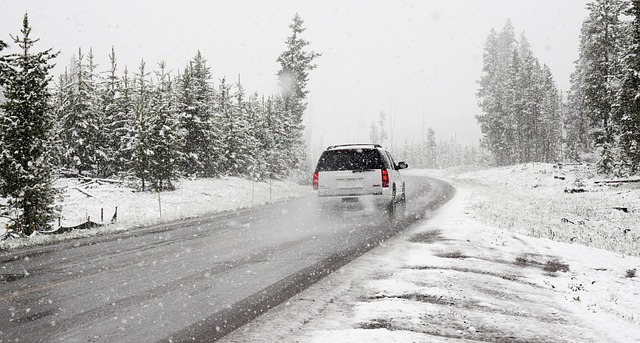Seasonal product choices for hot and cold weather care
Seasonal shifts in temperature change what dogs need from their gear and supplies. Hot weather raises concerns about hydration, sun protection, and breathable materials, while cold weather requires insulation, paw protection, and easy-to-store layers. Choosing the right chews, collars, leashes, travel items, grooming supplies, nutrition, and storage solutions helps keep pets comfortable and safe year-round.

Chews and training essentials
Chews and training tools should match your dog’s activity level and the season. In warm months, avoid long-lasting rubber items left in direct sun that can soften or release odors; choose harder chew toys that tolerate heat and are dishwasher-safe for hygiene. In cold seasons, consider insulated treat puzzles or denser chews that don’t become brittle in low temperatures. For training, use lightweight, odor-neutral rewards outdoors in summer so treats don’t melt; in winter, high-value, calorically denser treats can help motivate dogs during shorter walks. Training consistency and durability of chews help keep pets engaged regardless of weather.
Collars and leashes for safety and durability
Collars and leashes should prioritize safety and durability across climates. Breathable, padded collars and harnesses are better for hot weather to reduce chafing and heat retention. Waterproof, quick-dry materials are useful for rainy or snowy seasons. Reflective stitching or integrated lights improve visibility during shorter winter days and summer dawn/dusk walks. For durability, metal hardware like stainless steel buckles and reinforced stitching resist corrosion from salt and moisture. Regular inspection for wear, especially after icy walks or beach trips, maintains safety. Choose adjustable fits to accommodate seasonal layering without compromising snugness.
Travel gear for hot and cold weather care
Travel items should consider temperature control and portability. In hot weather, a ventilated crate or car barrier and portable water bowls reduce heat stress; cooling pads can help during stationary breaks. For cold trips, insulated carriers, blanket liners, and heated pads (used with care and following manufacturer guidance) keep dogs warm in crisp conditions. Compact, collapsible bowls and travel-sized grooming wipes assist with hygiene on the go. For longer drives, plan stops for bathroom breaks and shade or shelter depending on conditions. When using public transport or local services in your area, confirm vehicle temperature policies and allowed gear to ensure comfort and compliance.
Grooming and hygiene for seasonal changes
Seasonal grooming routines affect skin and coat health. In summer, regular brushing removes loose undercoat and helps air circulate to the skin; use hypoallergenic wipes and paw-cleaning supplies after beach or hiking trips. In colder months, trimming excess fur around paw pads, using paw balms, and reducing bath frequency help preserve natural oils and prevent dryness. Proper storage of grooming tools in a dry, clean container reduces rust and bacterial growth. This article is for informational purposes only and should not be considered medical advice. Please consult a qualified healthcare professional for personalized guidance and treatment.
Nutrition, storage, and food safety
Nutrition needs can shift with activity and temperature. Dogs may require more calories in cold weather to maintain body heat, while hot weather often reduces appetite and increases the need for hydration. Store food in airtight, cool containers for summer to prevent spoilage and in dry, pest-free locations for winter. Rotating treats and monitoring portion sizes supports weight management across seasons. If you rely on local services for diet plans or specialized food, verify storage recommendations and shelf life to maintain freshness and safety.
| Product/Service Name | Provider | Key Features | Cost Estimation (if applicable) |
|---|---|---|---|
| Classic Chew Toy (KONG Classic) | KONG | Durable rubber, dishwasher-safe, good for stuffing treats | $10–$25 |
| All-Weather Jacket (Ruffwear Quinzee or similar) | Ruffwear | Insulated, water-resistant, reflective trim for visibility | $60–$150 |
| Travel Crate (Kurgo) | Kurgo | Collapsible, ventilated, car-safe anchoring options | $80–$200 |
| Durable Collar (Lupine or similar) | Lupine | Reinforced stitching, lifetime warranty, weather-resistant | $15–$40 |
Prices, rates, or cost estimates mentioned in this article are based on the latest available information but may change over time. Independent research is advised before making financial decisions.
Sustainable choices and long-term maintenance
Sustainable materials and repairable gear reduce waste over time. Look for collars, leashes, and toys made from recycled materials or suppliers offering repair or replacement programs. Durable products that withstand seasonal extremes avoid frequent replacement: reinforced stitching, replaceable buckles, and modular designs extend service life. Proper storage—dry, ventilated spaces for winter coats and cool, shaded storage for summer gear—protects materials. Regular cleaning routines keep hygiene high and surfaces safer for both pets and people. Training dogs to accept seasonal gear gradually improves comfort and reduces stress with each transition.
Seasonal preparedness combines material choice, hygiene, and attention to changing nutritional and safety needs. Matching chews, collars, leashes, travel supplies, grooming items, and storage to hot and cold conditions helps maintain comfort and longevity of products across the year. Thoughtful, sustainable selections and routine inspections make it easier to adapt as seasons change without compromising safety or durability.





